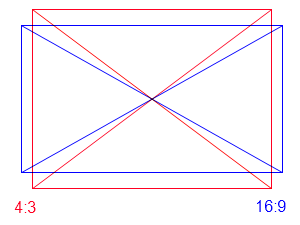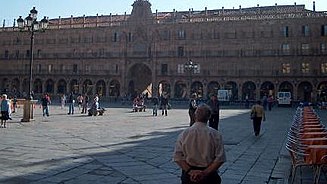giờ mình mới biết dùng màn hình wide mà học đồ họa sẽ hiển thị không chính xác đấy
bạn cho mình biết nó hiển thị không chính xác thế nào với
1 phiếu cho wide bạn có biết gì về pixel không thế, chúng khác nhau nhiều lắm.
16:9: pixel hình chữ nhật
4:3: pixel hình vuông

Có thể bạn nói 16:9 đẹp hơn , do tầm nhìn rộng lớn hơn, Hi, mình xin nói bạn là bạn sai, đó chỉ là cảm giác thôi. Còn khoa học nó chứng minh khác đó bạn.
Đây là lời trích trên Wiki , bạn xem full so sánh ở link;
Visual comparisons
Comparing two different aspect ratios poses some subtleties – when comparing two aspect ratios, one may compare images with equal height, equal width, equal diagonal, or equal area. More amorphous questions include whether particular subject matter has a natural aspect ratio (panoramas being wide, full-length images of people being tall), or whether a particular ratio is more or less aesthetically pleasing – the golden ratio (~1.618) is seen as especially pleasing. Of common display formats, 16:10 (8/5) is the closest to the golden ratio, and 15:9 is the closest film format.
Given the same diagonal, the 4:3 screen offers more (over 12%) area, because it is closer to square (which maximizes area given a diagonal). For CRT-based technology, an aspect ratio that is closer to square is cheaper to manufacture. The same is true for projectors, and other optical devices such as cameras, camcorders, etc. For LCD and Plasma displays, however, the cost is more related to the area, so producing wider and shorter screens yields the same advertised diagonal but lower area, and hence is more profitable.
The following compares crops of a given image at 4:3 and 16:9, with different parameters equal; note that in terms of subject, the squarer aspect ratio emphasizes the public square, while the wider aspect ratio emphasizes the wide building.
Two aspect ratios compared with images using the same diagonal size:
 4:3
4:3
 16:9
16:9
Two aspect ratios compared with images using the same area (number of pixels):

4:3

16:9
Code: http://en.wikipedia.org/wiki/Aspect_ratio_(image) Mình tạm dịch câu cuối của trích dẫn trên. , "Trong so sánh giữa 2 hình ảnh ở chế độ 4:3 và 16:9, với các thông số bằng nhau, hãy chú ý rằng ở các đối tượng, ở chế độ vuông cho hình ảnh lớn hơn, còn chế độ rộng lớn cho hình ảnh với tầm quan sát rộng." (Khả năng english có hạn)
Như vậy, đơn giản, ở cùng một thông số, chế độ 4:3 cho hình ảnh lớn hơn so với 16:9.
Vậy bạn hiểu người ta thường dùng 4:3 cho tỉ lệ của Design rồi chứ.
Have fun.



 4:3
4:3 16:9
16:9
